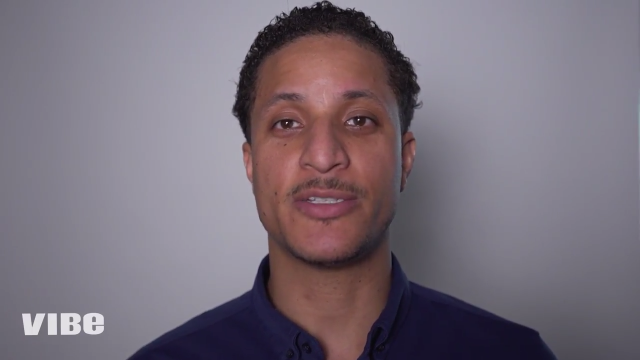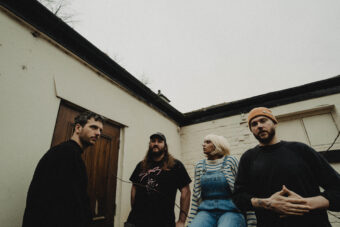Even after death, Kalief Browder’s legacy lives on. At 16, the Bronx native’s life would never be the same after he was sent to Rikers Island without trial on suspicion of stealing a backpack. Though set free after the case was dismissed, Browder fought to shake three years–two of which were spent in solitary confinement–worth of physical and emotional abuse at the hands of inmates, correctional officers and a justice system that ultimately failed him.
Through six weekly installments, Spike TV’s TIME: The Kalief Browder Story amplified the voice of the one-time Bronx Community College student nearly two years after he committed suicide on June 6, 2015. “If I would’ve just pled guilty, then my story would’ve never been heard,” Browder, deemed a prophet by executive producer Jay Z, says in the final minutes of the docu-series. “Nobody would’ve took the time to listen to me. I’d have been just another ‘criminal’.”
After months of what Kalief’s older brother Akeem Browder once called “lip service,” Mayor Bill de Blasio finally announced an end to the infamous jail complex. “The death of Kalief Browder was a wake-up call to this city,” he said at New York City Hall on March 30. “I am here to make a historic announcement: New York City will close the Rikers Island jail facility. It will take many years. It will take many tough decisions along the way, but it will happen.”
Hours before the TIME series finale, VIBE checked in with Akeem Browder over the phone, where the Shut Down Rikers founder opened up about his bid at the prison as a teen and shared candid thoughts on the mayor’s promise, New York City Public Advocate Letitia James’ push to name Rikers after his youngest brother and the mark Kalief Browder left on the world.
On his personal experience on Rikers Island:
Akeem Browder: I know Kalief saw, in his vision as a kid, his older brother getting arrested at 14. As a kid, he probably didn’t understand everything that was going on. However, I’m sure it affected him because all of my brothers and sisters were affected by it. When I was introduced to Rikers, they thought I was 27. They really did a number not just on me, but on my family who were supportive in sticking by me. In the long run, I’m sure all they did was put fear in everyone’s minds. I was beat up by the officers. I was jumped one by one. When Kalief saw me on Rikers when I was there [as an engineer for the Department of Corrections], he was confused because when you see an officer on the street as a kid you imagine they’re there for your protection, so he questioned it. He couldn’t understand. You could see the confusion on his face while he was trying to understand that they beat him up. He was able to see what I went through as a kid, just the confusion of they’re supposed to be here to protect me; meanwhile, they’re setting things up–setting up other inmates to beat him up.
On coping with his brother’s death:
I had to snap out of my depression. When Kalief passed, I didn’t acknowledge it as him taking his life. I acknowledged it as somebody killed my brother so for all of June, July, August [2015], I was out of it.
On Mayor de Blasio’s announcement to shut down Rikers Island:
As advocates for the Shut Down Rikers campaign, we’ve been fighting for a long time to even get it in the mouths of not just Mayor de Blasio, but Governor Cuomo, who I sat with sometime last month. We’ve been advocating for Raise the Age. I helped with writing the new Kalief Law, which is championed by Senator Squadron. We’ve been pushing so hard for acknowledgment that our kids shouldn’t be in an adult facility. Not only just that, we’ve been fighting for an immediate shutdown. When de Blasio finally came around to saying this, it’s a victory on one end for the people fighting. Just for him mentioning it when [six] months prior to a town hall meeting in September, he literally said, “We don’t have the resources.” Every sentence started with resources and ended with resources, so the people cheered out of relief when he [finally made his announcement]. I don’t want to take away from that joy, but to get to the real meat of it, we have to consider that there are so many levels of shutting down a facility such as Rikers. One, the fact that it’s going to take 10 years when Mayor de Blasio won’t even be the mayor at the time–I got to think he’s only saying this because it’s election season. You can’t have an election season and the people are not being heard, so I think it’s a publicity stunt.
On renaming Rikers Island after Kalief Browder:
If Kalief were here, he would be 23 and still be recovering for life. Just to think that his name would be attached to some place that critically damaged him is unforgivable. However, I do think if we attached his name to an island that was so notorious, what we could say is the city would always have to acknowledge my brother’s name…I think having Kalief’s name is hard, but [his death] is forever a stain in New York’s history so, on one end, it would serve as justice because in acknowledging his name, they’ll acknowledge every kid or everyone that was tortured on that island. It works two ways.
On shifting the focus of the $10.6 billion plan:
The people have been crying that we can do so much more with these allocated funds. We can allocate it towards something that’s more innovative. We’re doing an old system of punishment over correcting. Using the penal system is the same old system putting humans behind cages. The biggest part of it is, Rikers Island is decrepit and old and notorious, but the notoriety is not from the walls or the floors. It’s from the atmosphere and culture of violence that exists from the officers. All they’re doing is moving the correctional officers from one place to another.
On Mayor de Blasio’s move to replace Rikers with smaller jails throughout New York City’s boroughs:
It’s going to disenfranchise a lot of people in poor, black and brown communities because the jails are opening up in those communities. Where there’s a project in Washington Heights, they want to remove that so they can put a jail in that neighborhood. So where are you going to put people who can’t afford to live in any other community? It’s a bad situation that everyone’s cheering for out of victory, but they’re not being told the full story.
On alternatives to incarceration:
Shut Down Rikers is sponsored by the people, so we figured why not take a poll in every borough and ask people what [alternatives] we could have if Rikers was shut down…All across the census was the [New York] Department of Corrections has the highest population of mentally ill people, more than any other state in the U.S., so we could allocate some of that $10.6 billion towards funding a better Department of Health and Mental Hygiene. We can start by sponsoring companies like Exodus [Transitional Community] that help with the re-entry process. As we talk about kids being in the system, we have citizens that are returning from 20 or 30-year bids this year and next year, and we have no money to help them. They don’t even know what an iPhone looks like. None of them actually have a real capacity of what this world offers them…If they don’t have jobs or understand technology, they’re going to end up back in jail. I can only understand that this is a set up by opening up four new jails in this city. They will become the residents of these jails. I have a motto through Shut Down Rikers that says, “If you build it, they will fill it.” You have 20,000 beds across four jails. There’s no reason why they’re going to make 5,000 beds and not expect to put 5,000 people in it.
This article originally appeared on VIBE.





